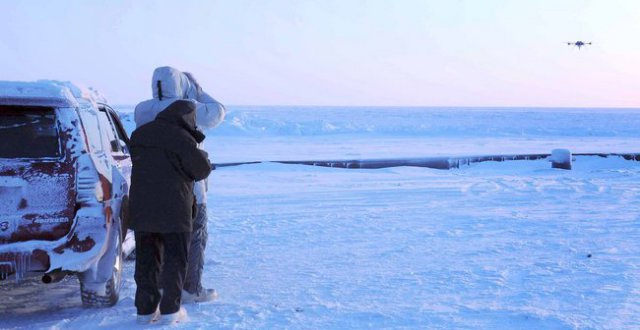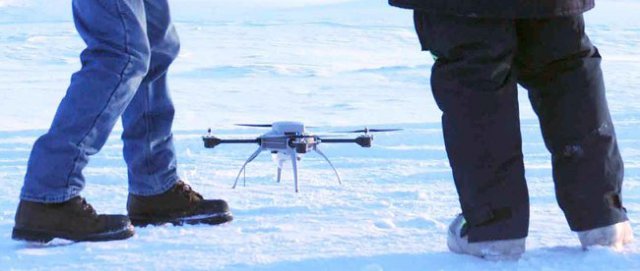A camera-equipped Aeryon Scout flew over Nome this week to help a Russian fuel tanker, the Renda, get a perspective on the sea ice near the town’s harbour.
The Renda is sailing to Nome to deliver fuel. The town’s supply is expected to run out before spring. The tanker is accompanied by US Coast Guard icebreaker Healy, which opens paths for the tanker. Nome’s harbour is too shallow for Healy to enter, and the Renda will have to fare on its own to unload its fuel.
Researchers from the University of Alaska Fairbanks’ Geophysical Institute arrived in Nome to help evaluate the ice near the harbor last week. Andy Mahoney, a research assistant professor of geophysics, analyzed the ice outside the harbour and got a read on some of the pressure ridges’ thickness. Pressure ridges are created by ice pushing up against other ice, creating miniature mountain ranges. One was 25 feet thick.
Greg Walker, manager at the Geophysical Institute’s Poker Flat Research Range, arrived in Nome to provide more information on the sea ice outside of town using unmanned aircraft owned by BP Alaska. The small “drones” are about the size of smoke detectors, with four arms with propellers attached. A camera is positioned at the bottom of the craft.
Walker and his research assistants flew the aircraft around the harbour, snapping shots that will be sent to the Renda.
Jessica Cherry, a research assistant professor who also traveled to Nome, said the drones are used to monitor the situation, “especially in ice conditions where there’s the potential for an oil spill.”
Photos: Jessica Cherry
Source: Fairbanks Daily News-Miner


